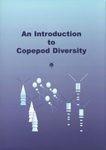![The Natural History of the Crustacea, Volume 1: Functional Morphology and Diversity The Natural History of the Crustacea, Volume 1: Functional Morphology and Diversity]()
Click to have a closer look
About this book
Contents
Customer reviews
Biography
Related titles
About this book
Crustaceans are increasingly used as model organisms in all fields of biology, including neurobiology, developmental biology, animal physiology, evolutionary ecology, biogeography, and resource management. One reason for the increasing use of crustacean examples is the wide range of phenotypes found in this group and the diversity of environments they inhabit; few other taxa exhibit such a variety of body shapes and adaptations to particular habitats and environmental conditions. A good overview of their functional morphology is essential to understanding many aspects of their biology.
This volume is the first in The Natural History of Crustacea series, a ten-volume series that will treat all aspects of crustacean biology, physiology, behavior, and evolution. The series updates and synthesizes a growing wealth of information on the natural history of this remarkable group. Functional Morphology and Diversity explores the functional morphology of crustaceans, which cover the main body parts and systems. The book brings together a group of internationally recognized-and up-and-coming-experts in fields related to systematics and morphology. Contributing authors study a range of crustacean taxa and topics, and thus the volume provides a compact overview of the great phenotypic diversity and their function found among crustaceans. The first broad treatment of Crustacea in decades, the book will be invaluable for researchers and students in this and related fields.
Contents
Chapter 1: Comments on Crustacean Biodiversity and Disparity of Body Plans - Frederick S. Schram
Chapter 2: Evolution of Crustacean Appendages - Joachim T. Haug, Andreas Maas, Carolin Haug and Dieter Waloszek
Chapter 3: Mechanisms of Limb Patterning in Crustaceans - Terri A. Williams
Chapter 4: The Crustacean Carapace - Morphology, Function, Development, and Phylogenetic History - Jørgen Olesen
Chapter 5: The Crustacean Integument: Structure and Function - Richard Dillaman, Robert Roer, Thomas Shafer and Shannon Modla
Chapter 6: The Crustacean Integument: Setae, Setules and other Ornamentation - Anders Garm and Les Watling
Chapter 7: Antennules and Antennae in the Crustacea - Geoff Boxshall & Damià Jaume
Chapter 8: Feeding and Digestive System - Les Watling
Chapter 9: Appendage Diversity and Modes of Locomotion: Walking - Jim Belanger
Chapter 10: Morphological Adaptations of Crustaceans for Digging and Burrowing - Zen Faulkes
Chapter 11: Appendage Diversity and Modes of Locomotion: Swimming at Intermediate Reynolds Numbers - Jeannette Yen
Chapter 12: Swimming Fast and Furious: Body and Limb Propulsion at Higher Reynolds Numbers - Michel Boudrias
Chapter 13: Adaptive Modification of Appendages for Grooming (Cleaning; Antifouling) and Reproduction in the Crustacea - Raymond T. Bauer
Chapter 14: Circulatory System and Respiration - Christian S. Wirkner & Stefan Richter
Chapter 15: Functional Anatomy of the Reproductive System - Laura S. López Greco
Chapter 16: Structure of the Nervous System: General Design and Gross Anatomy - Jeremy M. Sullivan & Jens Herberholz
Customer Reviews
Biography
Les Watling is Professor in the Department of Zoology at the University of Hawaii
Martin Thiel is Professor of Marine Biology at the Universidad Catolica del Norte in Chile.

























![The Encyclopedia of the Swedish Flora and Fauna, Kräftdjur: Krill – Tiofotade Kräftdjur [Swedish]](http://mediacdn.nhbs.com/jackets/jackets_resizer_medium/26/268174.jpg?height=150&width=118)



![Les Crustacés Décapodes des Petites Antilles: Avec de Nouvelles Observations pour Saint-Martin, la Guadeloupe et la Martinique [The Crustacean Decapods of the Lesser Antilles: With New Observations for Saint-Martin, Guadeloupe and Martinique]](http://mediacdn.nhbs.com/jackets/jackets_resizer_medium/24/245203.jpg?height=150&width=106)














